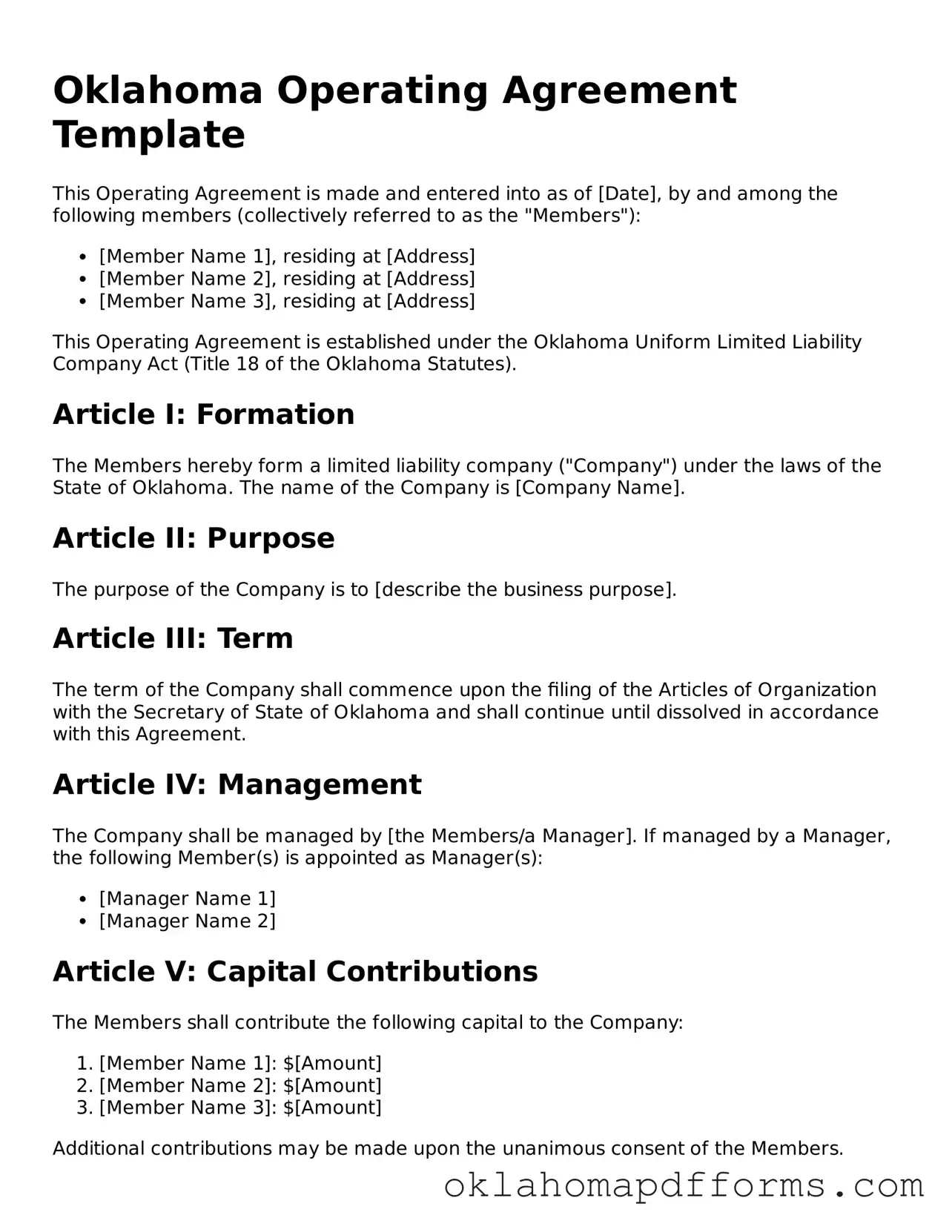Oklahoma Operating Agreement Template
This Operating Agreement is made and entered into as of [Date], by and among the following members (collectively referred to as the "Members"):
- [Member Name 1], residing at [Address]
- [Member Name 2], residing at [Address]
- [Member Name 3], residing at [Address]
This Operating Agreement is established under the Oklahoma Uniform Limited Liability Company Act (Title 18 of the Oklahoma Statutes).
Article I: Formation
The Members hereby form a limited liability company ("Company") under the laws of the State of Oklahoma. The name of the Company is [Company Name].
Article II: Purpose
The purpose of the Company is to [describe the business purpose].
Article III: Term
The term of the Company shall commence upon the filing of the Articles of Organization with the Secretary of State of Oklahoma and shall continue until dissolved in accordance with this Agreement.
Article IV: Management
The Company shall be managed by [the Members/a Manager]. If managed by a Manager, the following Member(s) is appointed as Manager(s):
- [Manager Name 1]
- [Manager Name 2]
Article V: Capital Contributions
The Members shall contribute the following capital to the Company:
- [Member Name 1]: $[Amount]
- [Member Name 2]: $[Amount]
- [Member Name 3]: $[Amount]
Additional contributions may be made upon the unanimous consent of the Members.
Article VI: Distributions
Distributions of profits and losses shall be allocated among the Members in proportion to their respective capital contributions.
Article VII: Transfer of Membership Interests
No Member may transfer their membership interest without the written consent of the other Members.
Article VIII: Dissolution
The Company may be dissolved upon:
- The unanimous consent of the Members.
- The entry of a decree of judicial dissolution.
Article IX: Miscellaneous
This Agreement shall be governed by and construed in accordance with the laws of the State of Oklahoma. Any amendments to this Agreement must be in writing and signed by all Members.
IN WITNESS WHEREOF, the Members have executed this Operating Agreement as of the day and year first above written.
___________________________
[Member Name 1]
___________________________
[Member Name 2]
___________________________
[Member Name 3]
